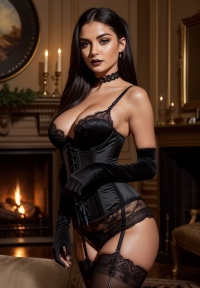Artificial Intelligence Art


There are many mechanisms for creating AI art. Among those that have become popular in 2021 and 2022 are text-to-image programs that create artwork based only, or mainly, on textual prompts. Image-to-image technologies build on top of that by using an input image as a source to generate output images. For example, the software can modify a given image, or only masked areas inside a given image (inpainting), or expand an image beyond its original dimensions (outpainting), based on a textual prompt and the visual information from the input image.
Artificial intelligence art is distinct from rendered art, which is also computer-generated. In rendered art, a human artist creates a 3D model of a scene, and a computer program renders an image from this input. In AI art, the computer program creates the image without any 3D model, only based on the AI's training regarding thousands or millions of 2D images and the corresponding keywords.
AI art can look photorealistic, but also resemble paintings, drawings, or any other art style. AI art can easily mimic the style of famous artists, and also mix and combine artistic styles.
All legal aspects regarding art also apply to AI art. For example, AI art can infringe company rights regarding copyrighted characters, personality rights, trademark laws, etc.
Text to Image
Text-to-image model programs produce an images from 'natural language' descriptions. Such models were initially developed in the mid-2010s, as a result of advances in deep neural networks. In 2022, the output of text-to-image models, such as OpenAI's DALL-E 3, Google Brain's Imagen, StabilityAI's Stable Diffusion, and Midjourney began to approach the quality of real photographs and human-drawn art.
Text-to-image models generally combine a language model, which transforms the input text into a latent representation, and a generative image model, which produces an image conditioned on that representation. The most effective models have generally been trained on image and text data derived from the web.
Erotic AI-generated art
AI offers vast potential for erotic imagery. While most AI generators prohibit the creation of adult artwork, there are exceptions which can be used to create sexually explicit content; examples include NovelAI, Stable Diffusion, and Pornpen. In some cases, users can train the AI to compose specific genres or subject matter based on existing data-sets.
Stable Diffusion's ControlNet, img2img and inpainting features can be used to change given SFW images into NSFW versions, or to change certain anatomical features to suit one's preferences. Some of the more advanced programs can create "deep fake" simulations, film clips and animation.